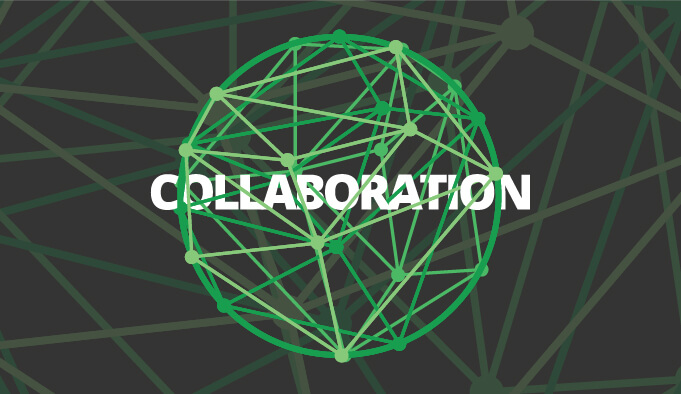You have a question. Do you look it up on Google? Maybe it’s on Wikipedia. More of a local knowledge question? You probably want to ask people on Facebook…
Quite often, that’s the first step when you have questions: ‘I’ve hurt my lower back. Anyone got any experience with this?’; ‘I’m looking for a painter — any recommendations?’ Not reaching for Yellow Pages to look for a physiotherapist or a decorator, not calling for an appointment with a GP. A post on Facebook asking for other people’s experience and advice.
That’s not to say this will elicit great answers, but someone in that person’s network will have knowledge and experience, and may be able to recommend the right course of action. Or not. The point is that the source of answers, knowledge, and information, has changed. The expectation of where to find a solution has changed.
The same thing has happened with work. Have you noticed?
Consumerisation of communication
Facebook was created in 2004, Twitter in 2006, the iPhone arrived in 2007, and several other social networks have come and gone since. Internet enabled consumer behaviour changed with the advent of social media and what’s been called Web 2.0. Brands and businesses are no longer the trusted voice. Instead we default our trust to the unknown consumer who chooses to comment on an experience — think TripAdvisor reviews — or the social network of mostly acquaintances (and a few actual friends). No one waits for an email trail — it’s instant gratification, or suffer the indignation of a narky rant on Facebook or Twitter.
This same need to source knowledge and communicate via a threaded conversation in a visible, transparent network is the new normal. New generations of employees joining the workforce (notably since 2004) don’t know any other way to communicate. Email? Desktop computer-based only? No thanks.
This consumerisation of communication has very quickly influenced the way we can work. An early example of this is Yammer — a cloud and app-based social network for work — created in 2008.
Though intranets had been around for a while at this point, they were (are) closed systems that required infrastructure and administration, and for you to be in the office, connected to the network. They were also primarily for networked file sharing, less so about communicating.
Yammer was bought by Microsoft in 2012 for $1.2 billion, a purchase that signalled the importance of a future workplace centred around collaborative communications, and a community of connected colleagues.
The network effect
“Tools for collaboration and working together align more with how consumers operate and find things through networks,” says Mark Woodrow, vice president of customer success at Maestrano, and former Asia-Pacific customer success lead for Yammer and Office 365.
“Users don’t have time to wade through information books, manuals, reams of data… they ask a question on a network and will often get an answer within minutes.”
Mark Woodrow spent several years working with large and small organisations across the Asia Pacific region on adopting and working with Yammer. Whether small teams, or companies with 10,000 staff and over, the same outcomes and benefits are apparent across the various use cases — engaged employees aligned around the company vision, improved social connections, and centralised knowledge management.
Woodrow says collaboration tools are about creating equality across the value of ideas.
“Collaboration tools are designed to treat everyone as equals,” he says.
“Someone with a customer facing role is as valuable as the CEO in contributing to the ideas and innovation within the business. There’s enormous value in treating everyone’s ideas and contributions with equal merit.”
Human behaviour
According to a 2012 McKinsey Global Institute report (The social economy: unlocking value and productivity through social technologies), social technologies have been adopted at unprecedented growth.
“It is fundamental human behaviour to seek identity and ‘connectedness’ through affiliations with other individuals and groups that share their characteristics, interests, or beliefs,” it says.
Social technologies have been adopted faster than any other media technology. It took television 13 years to reach 50 million households, internet service providers three years to reach the same number of subscribers, Facebook one year, and Twitter nine months.
Social is becoming a feature of everyday technologies. Just adding the ability to ‘like’ or comment on something immediately socialises the interaction. By enabling this in online applications, the “scale, speed and disruptive economics of the internet” are brought to bear, removing barriers like geography and time zones, and the limitations of one-to-one communications, namely email.
The email black hole
Today, a huge amount of relevant knowledge is locked in inboxes. McKinsey estimated in 2012 that total email use by ‘interaction workers’ could be reduced by as much as 25 percent, freeing up to seven or eight percent of the work week for more productive activities. If you imagine a director works approximately 60 hours per week, that’s more than half a day gained in productive time. Who wouldn’t like half a day back from their inbox?
McKinsey’s research says that two-thirds of the value creation opportunity afforded by social technologies lies in improving communications and collaboration within and across enterprises. By adopting these organisational technologies, they estimate companies could raise the productivity of knowledge workers by 20 to 25 percent.
It’s important to realise, however, that these benefits don’t come from simply switching the software on. The organisation must support the implementation with a commitment to significant transformations in management practices, organisational behaviour, and cultural change. These changes can sometimes take years to realise their full potential.
Multiple options
Nine years on from the birth of Yammer and there are numerous enterprise social network platforms and team collaboration tools. Yammer, Slack, HipChat, Microsoft Teams, Jive, Moxtra, and now Workplace by Facebook, are a few of the more obvious names. There are lots more, including many for specific niche industries.
Whichever system a team or company chooses, they all, by and large, achieve the same ends if set up with an implementation plan, defined objectives, and are supported by enthusiastic community managers.
Mark Woodrow has used four similar products and says there’s not much between the systems and the core architecture objectives.
“Broadly, the fundamentals of making work visible and having comments and groups or channels is common across all collaboration tools,” he says.
“Microsoft Teams probably adds some differentiation through being able to connect documents to comments and chats across Office 365, but that’s still to be realised in full.
“The key to success lies in transparency and diversity. Without diversity, it doesn’t matter how good the platform is, you’re just listening to an echo chamber.”
Making it stick
Once you decide this is the right path for your business, the key to making collaboration tools stick is to have volunteer community managers work on content and activity to draw people in.
Mark Woodrow’s advice is to implement on the basis that a collaborative platform brings clear benefits. It’s more than just a tool.
“An active group draws people in,” he says.
“It’s important to have volunteers to drive this, not necessarily someone from the senior hierarchy. Imposed adoption generally doesn’t work. Having voluntary opt-in, and an initial community manager, or early champion, generally works.
“The hold ups to making tools like this stick are generally a lack of planning, excuses like not having enough time, or resistance to a change from how things have always been done. You have to recognise that people mostly want to communicate like this, it’s just a case of having compelling activity, or visible early communications benefits around work and projects.”
A typical concern from employers is that it’s ‘Facebook at work’. Woodrow says it’s important to allow a certain amount of social chat, but also to remember these are work tools for productivity outcomes.
“Organisations that block general interest and social groups tend to fail in their implementations,” he says.
“If you aim for the network content to be around 80 percent work related and 20 percent interests and social, it’s a good balance to start with. That said, common social interests are a great way to draw people in to using the system more regularly, and the work habit comes from that.
“I’ve seen a lot of evidence of work happening and decisions being made because of common social interests across a company.”
Adding value
Above all, social collaboration tools for work must add visible value to business objectives.
“Employees like to know the ‘why’ in the business purpose for using tools like this,” Woodrow says.
“Always try to find the why in the technology you use for teamwork. When you’re able to link technology to the broader business vision, or the project goals, the cultural shift you’re asking people to accept is likely to be more successful.”




